Micro Constant Speed Motor
120W 90MM Micro Constant Speed Motor
Product Overview
HM Motor, a leading manufacturer of micro constant speed motors, proudly presents our 120W Micro Constant Speed Motor. Renowned for its superior performance and stability, this motor is the perfect choice for diverse applications.
From industrial automation and household appliances to medical devices, our 120W Micro Constant Speed Motor delivers. Its efficient design and reliable performance ensure seamless equipment operation and lasting durability.
Key features of the 120W Micro Constant Speed Motor include:
- High Efficiency: Built with cutting-edge technology and top-quality materials, this motor provides outstanding power and efficiency, performing reliably under heavy loads or extended use.
- Compact Design: With its small size and lightweight build, this motor is ideal for applications with limited space, delivering maximum performance even in compact setups.
- Quiet Operation: Featuring advanced vibration-damping technology and an optimized structure, this motor operates quietly and smoothly, enhancing user comfort without disrupting the environment.
- Reliability: Quality is paramount at Hengming Intelligent. Our 120W Micro Constant Speed Motor is rigorously tested to ensure durability, stability, and excellence, meeting the toughest industry demands.
120W Micro Constant Speed Motor Modes / Performance

*All safety specifications are cerfified by the model name on the nameplate of the motor

- The speed in the table is calculated by dividing the average speed of the motor by teh deceleration. The actual speed will vary with the load, ranging from 2 to 20%.
- The torque in the table is calculated by the rated torque x deceleration ratio x transmission efficiency of the motor.
- The maximum allowed torque of the reducer is GN:20N.m\GU:40N.m\GS:40N.m.
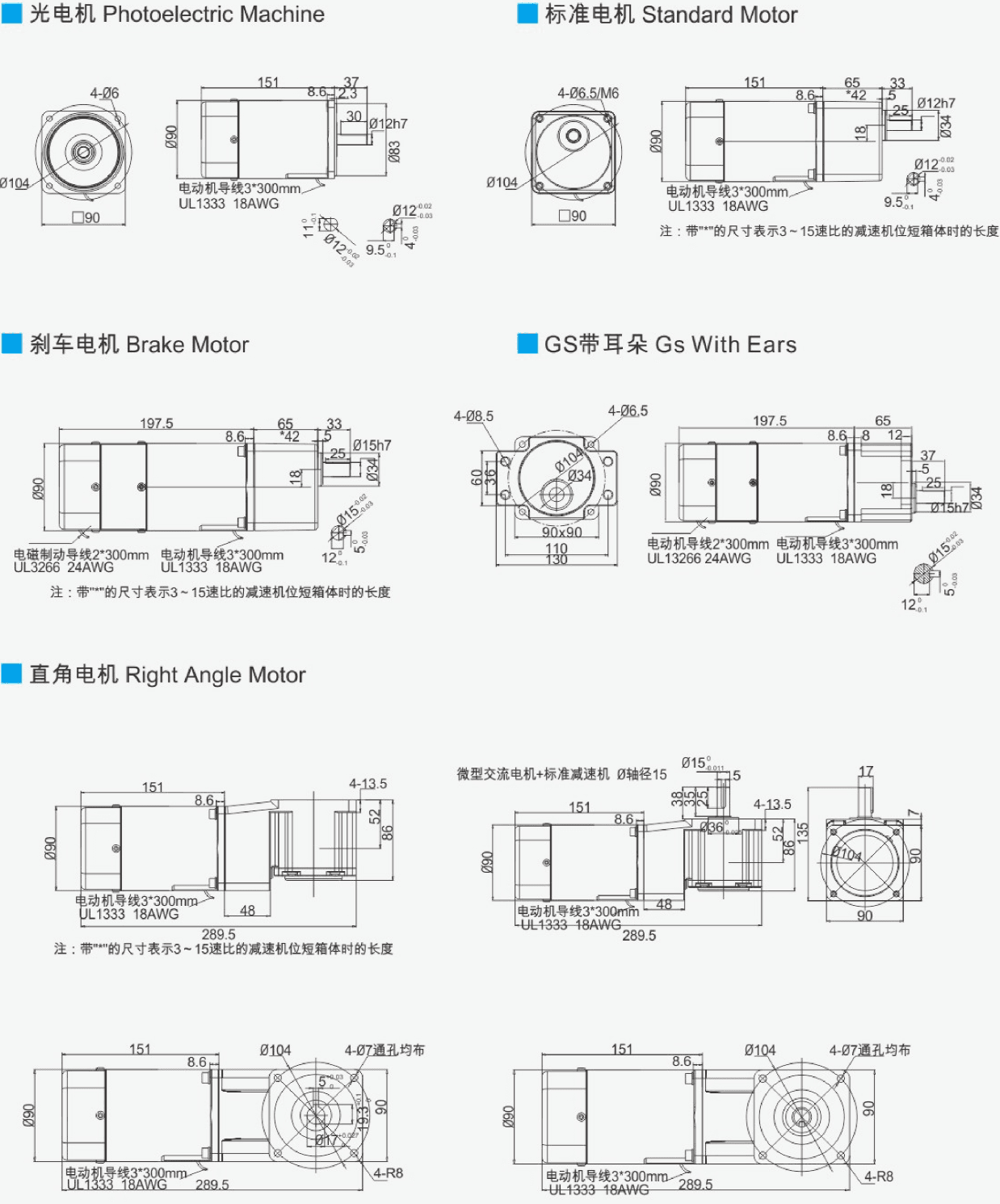
- Photoelectric Machine
- Standard Motor
- Brake Motor
- GS with Ears
- Right Angle Motor
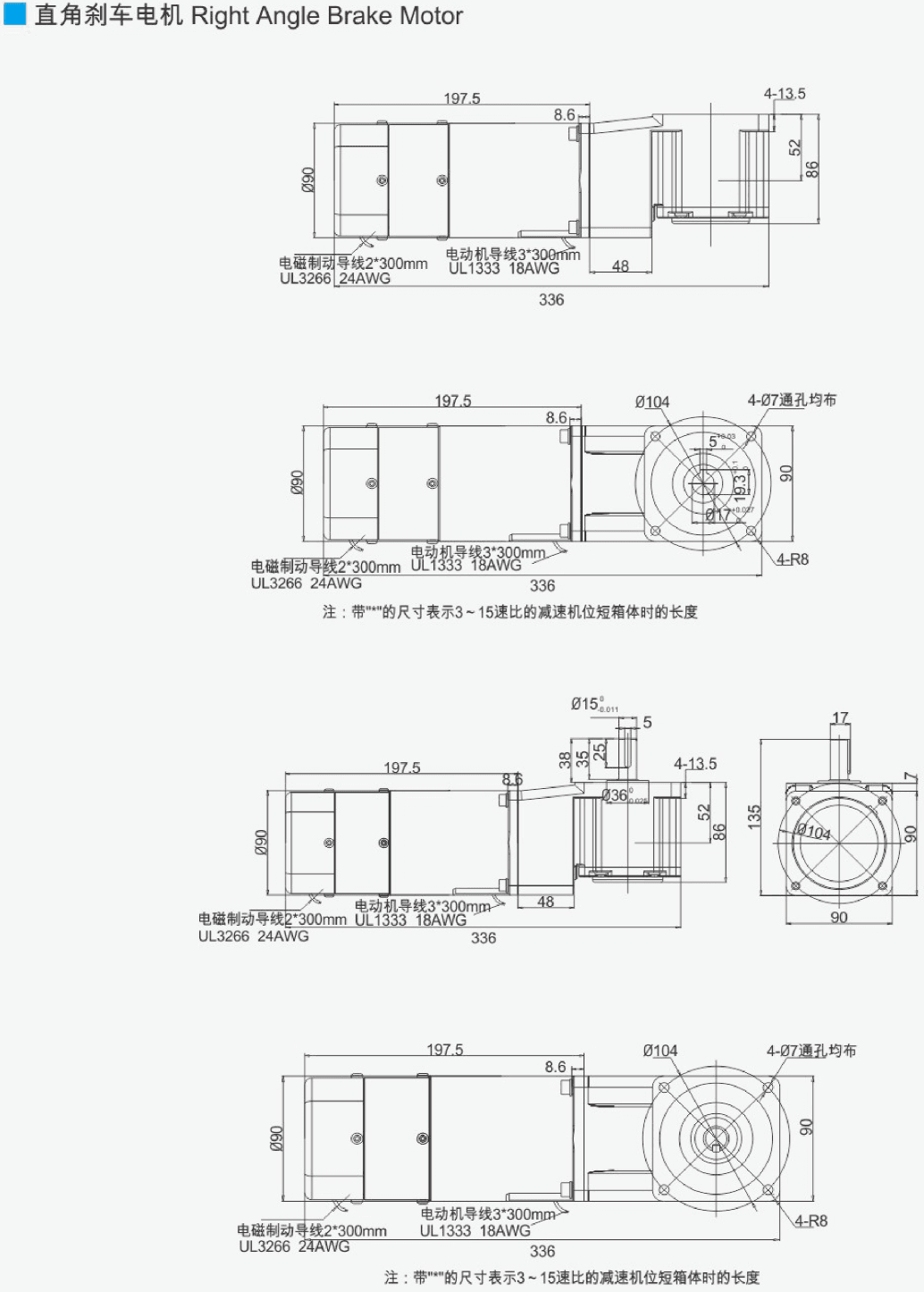
- Dimensions of right angle brake motor
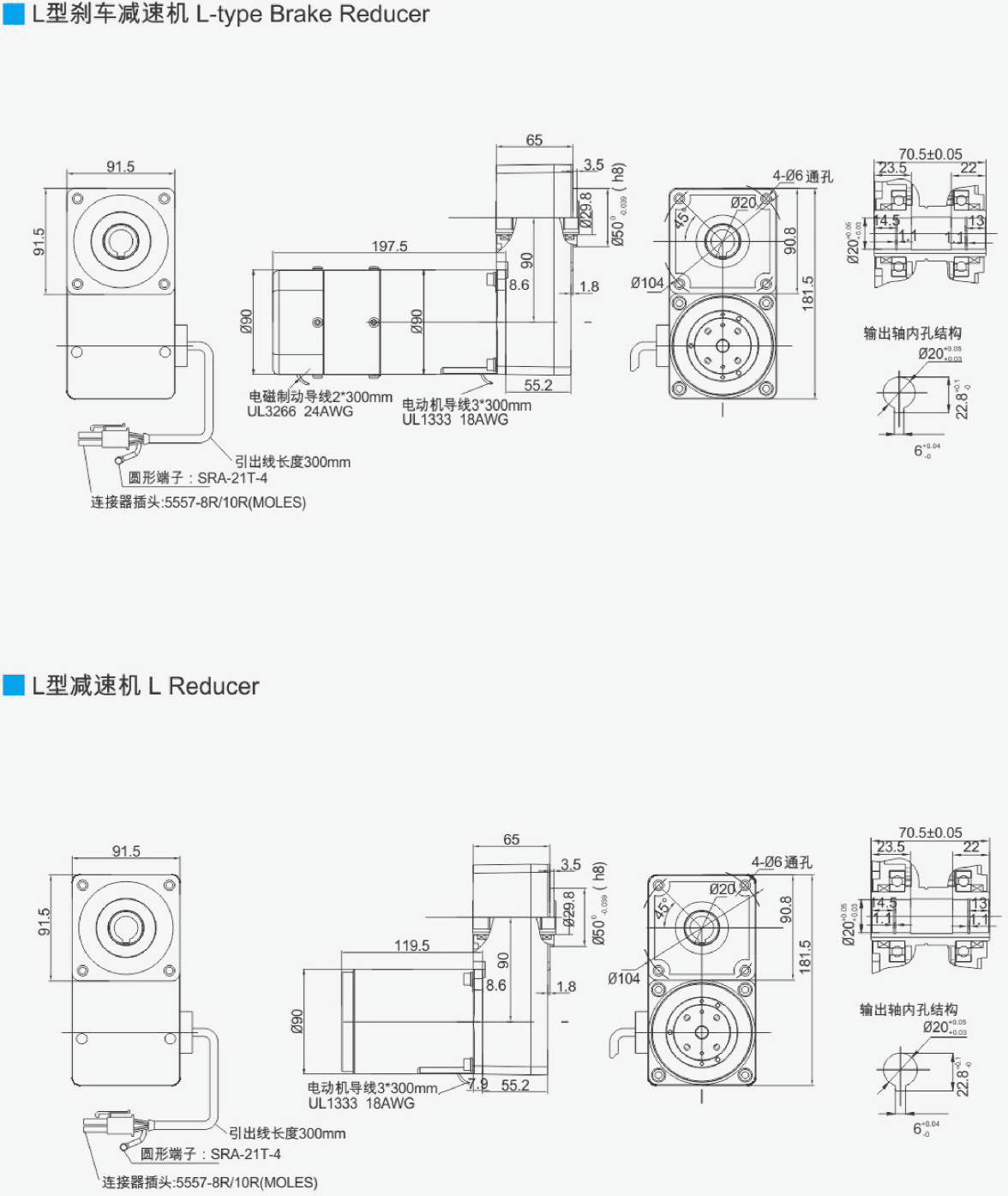
- L-type Brake Reducer
- L Reducer
Miniature gear reduction motor series
Micro constant speed motor series models
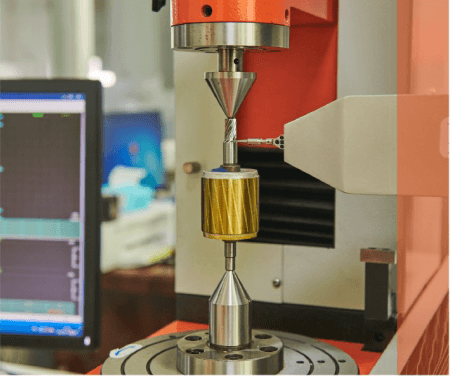
“High Quality, High Standards, Zero Defects”
Our company unites a team of seasoned professionals with over 20 years of expertise in production, technology, and sales. Composed of passionate and driven individuals, we share a common vision. We are dedicated to innovation across technology, manufacturing, management, and processes. With a full range of imported and domestic production and testing equipment, our integrated industrial assembly line ensures quality and efficiency. Supported by a strong sales network and comprehensive after-sales service, we strive to provide exceptional products and support to all our customers.
General Specification of Gear Motors
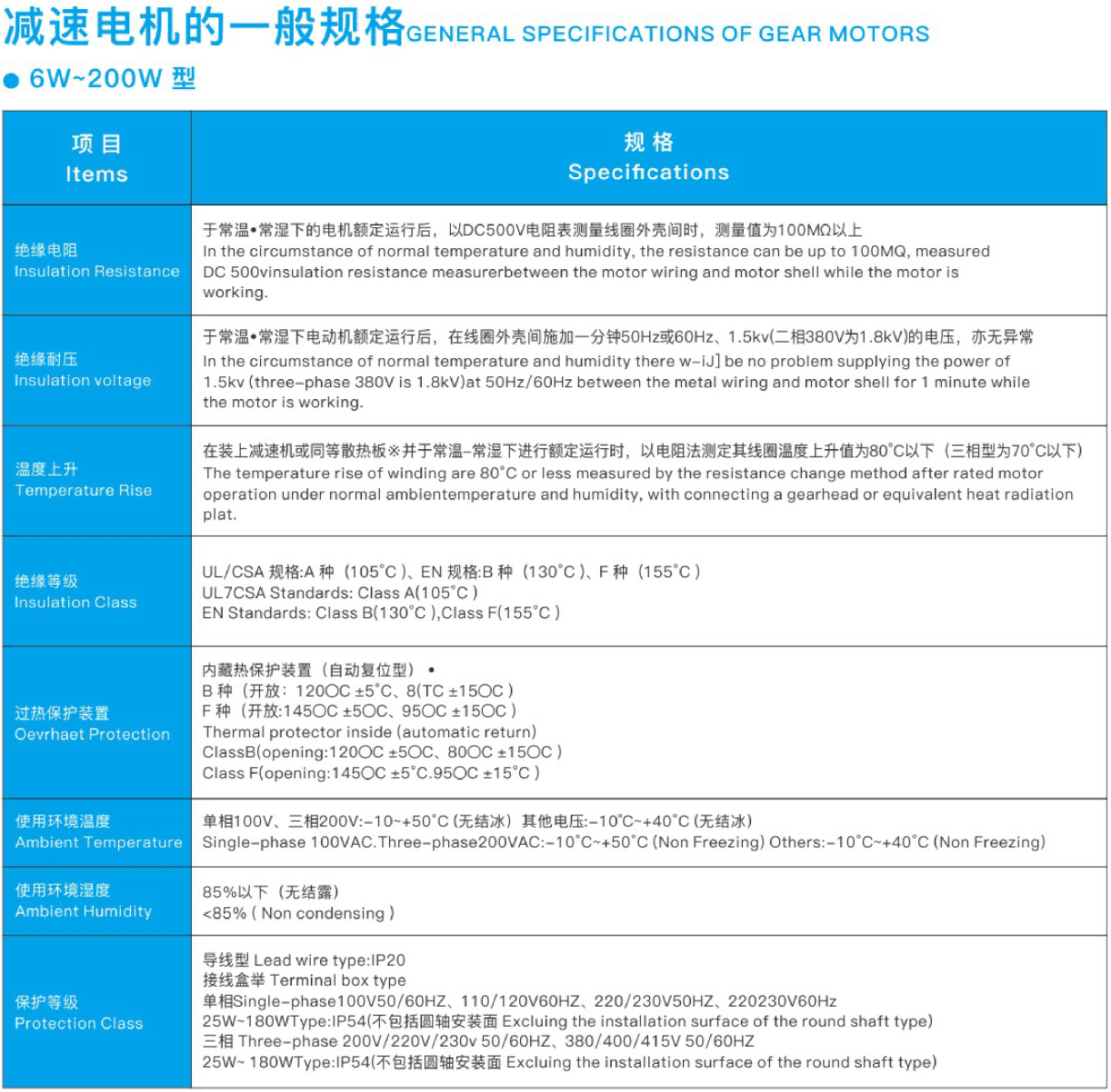

Selection of Junction Box Orientation

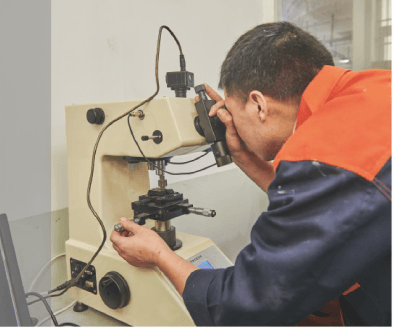
We Can Always Do Better
We focus on the details, enforcing strict quality control and robust process oversight to maintain high standards and prevent defects. Our comprehensive quality management system includes dedicated inspectors at every production stage, ensuring compliance with technical specifications. In the final inspection phase, skilled technicians conduct a full evaluation of each product’s appearance and performance, guaranteeing top-quality output before shipment.
Notes
微型定速电机安装与使用注意事项
- General: Do not operate the gearbox or motor beyond the specifications on the nameplate or in the product catalog, as this may cause electric shock, injury, or damage to equipment. Avoid inserting fingers or objects into the gearbox or motor openings to prevent electric shock, injury, fire, or damage. Do not use a damaged gearbox or motor, which could result in injury or fire. Do not remove the nameplate. Unauthorized modifications by customers void the warranty, and our company assumes no liability.
- Handling: Exercise caution when moving the product, as dropping or tipping it poses significant risks.
- Installation: Keep flammable materials away from the gearbox and motor to prevent fire hazards. Ensure no objects block motor ventilation or cooling, as this could lead to burns or fire from overheating. Avoid touching the keyways of the gearbox or motor gears with bare hands to prevent injury. For applications like food machinery prone to oil leaks, attach an oil cup at the installation point to contain leaks and protect the product.
- Connection to Main Machinery: Equip rotating parts with safety covers to avoid injury. Confirm the rotation direction before connecting to other machinery, as incorrect rotation may cause injury or damage.
- Wiring: Do not touch terminals during insulation resistance testing to avoid electric shock.
- Operation: Connect to the power supply as per the wiring diagram or manual to prevent electric shock or fire. (For motors without a junction box, reinforce insulation at connection points.) Avoid Avoid excessive bending, stretching, or clamping of power cables or motor leads to reduce electric shock risks. Securely ground the grounding terminal to prevent electric shock. Use only the power supply specified on the nameplate to avoid motor burnout or fire.
- Daily Inspection and Maintenance: During operation, keep away from rotating parts (e.g., shafts) to avoid injury. In case of entanglement or injury, immediately switch off the power and respond promptly. During power outages, turn off the power switch to prevent injury or damage upon power restoration. Note: Motors with thermal protection will automatically shut off if overheated and restart once cooled, provided no damage has occurred.
- Inspection Upon Receipt: Confirm that the received product matches your order. Using the wrong product may damage the motor or equipment.
Trouble Shooting For Reducer
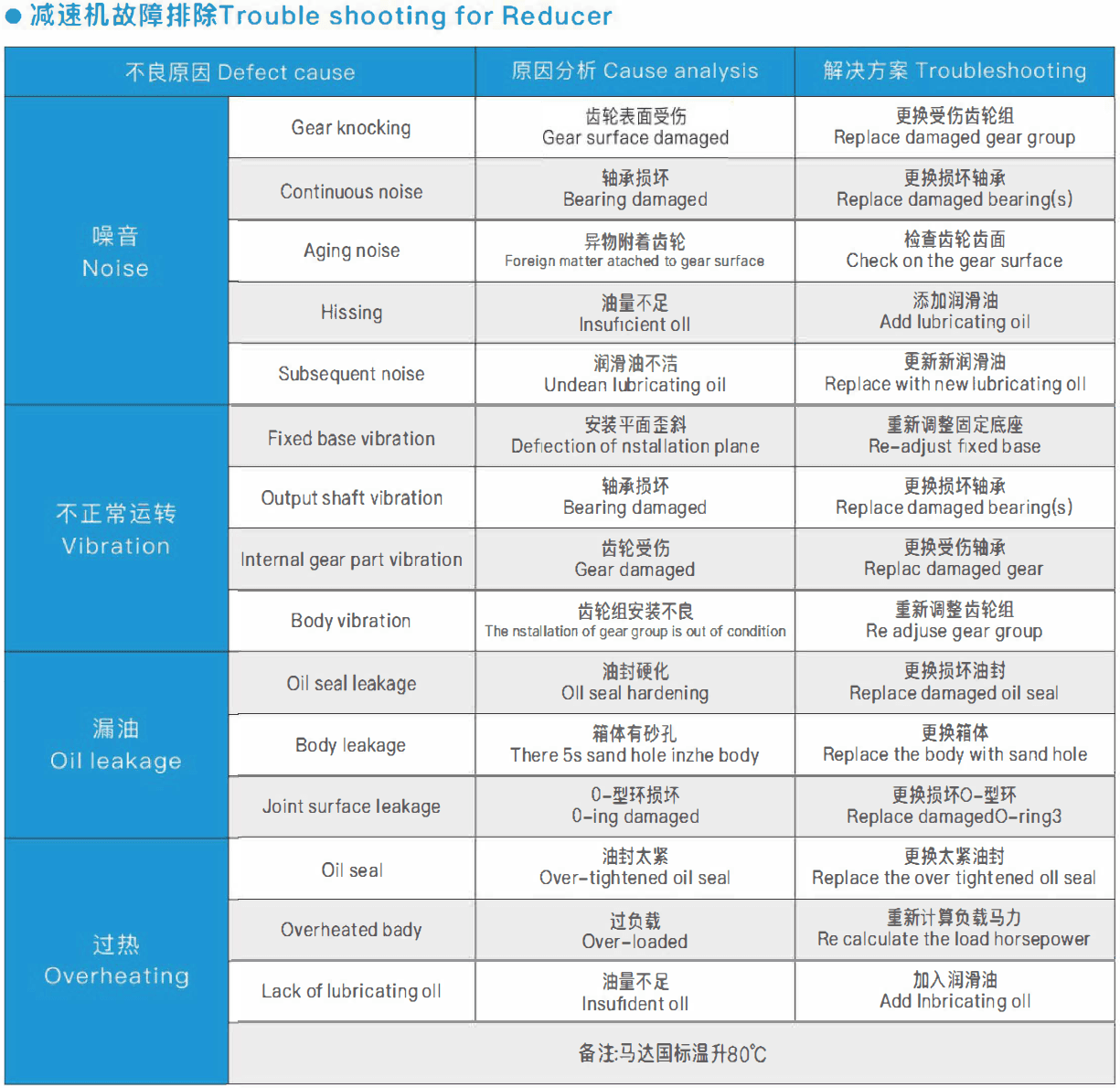
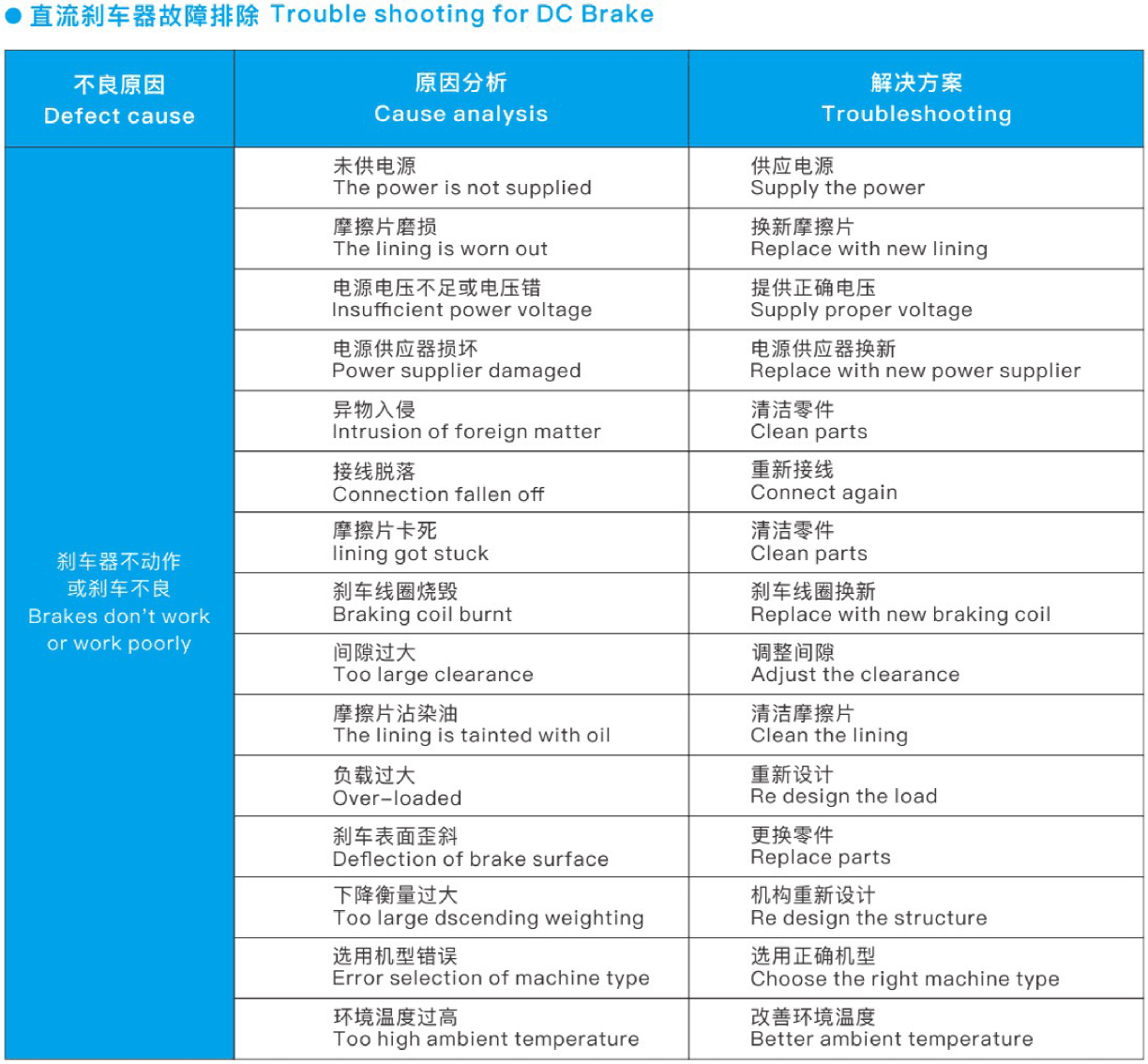
FAQs
Micro fixed speed motors usually use electronic control technology to regulate the motor speed by controlling the current or voltage. It usually consists of two parts: the motor body and the controller. The controller monitors the motor speed in real time through feedback signals and adjusts the current or voltage to achieve the desired speed control.
Choosing a suitable micro constant speed motor requires consideration of multiple factors, including the required speed range, load requirements, durability, and accuracy requirements. The size and power density of the motor should also be considered to ensure its adaptability to the space requirements and power consumption limitations of specific application scenarios.
Micro fixed speed motors have advantages such as small size, fast response, high efficiency, and high-precision control. They are suitable for various applications, can provide precise position and speed control, and achieve stable and reliable operation.
The high-precision control of micro constant speed motors is usually achieved through closed-loop feedback systems. Feedback sensors (such as encoders) are used to monitor the motor speed in real time and send feedback signals to the controller. The controller adjusts the current or voltage based on the feedback signal to achieve the desired speed of the motor.
Micro constant speed motors are widely used in automation equipment, robotics technology, medical devices, precision instruments, optical equipment, and other fields. They can be used to drive rotating platforms, precision positioning systems, precise motion control of medical devices, and more.
Usually, micro constant speed motors do not require frequent maintenance and upkeep. However, it is important to regularly check the operating status and temperature of the motor. Ensure good ventilation around the motor to prevent dust and particulate matter from entering. If any abnormal noise, vibration, or overheating issues are found, the motor should be immediately stopped and checked.
Micro constant speed motors and variable speed motors are two different types of electric motors, which differ in their working principles and functions. Here are some key characteristics that distinguish between constant speed motors and variable speed motors:
- Control method: Constant speed motors usually use open-loop control, which means that a specific voltage and frequency are given to maintain a constant speed. Variable speed motors typically use closed-loop control to adjust output speed through sensor feedback.
- Control method: Constant speed motors usually use open-loop control, which means that a specific voltage and frequency are given to maintain a constant speed. Variable speed motors typically use closed-loop control to adjust output speed through sensor feedback.
- Application areas: Constant speed motors are suitable for applications that require high speed and minimal load changes, such as clocks, instruments, and equipment. Variable speed electric motors are suitable for applications that require real-time speed adjustment based on load changes, such as mechanical transmission systems, speed controllers, etc.
Constant speed motors and variable speed motors are two different types of motors that differ in speed control. Here is the difference between a fixed speed motor and a variable speed motor:
- Speed control: The speed of the constant speed motor is fixed and cannot be adjusted, it always runs at a constant speed. The speed regulating motor has the ability to adjust the speed and can change the output speed at any time according to demand.
- Control method: Constant speed motors usually use open-loop control, which means that a specific voltage and frequency are given to maintain a constant speed. Adjustable speed motors typically use closed-loop control, adjusting output speed through sensor feedback to achieve precise speed control.
- Application scope: Fixed speed motors are suitable for applications that require high speed and small load changes, such as clocks, instruments, and equipment. Adjustable speed motors are suitable for applications that require real-time speed adjustment according to load requirements, such as industrial production lines, fans, pumps, etc.
1. Safe and Beautiful: Miniature junction box protection, IP54 level, makes wiring and replacement more convenient, safer, and more beautiful, enabling your product to better meet safety standards.
2. Rich range of models: With strong financial and technological capabilities, we offer rack bases ranging from 60-100mm and power outputs from 6W to 200W.
3. Ultra low noise: High precision hobbing machines and AAA high-grade rolling cutters are used to process high-precision helical gears. The four corners of the four box body adopt a high rigidity structure in the form of double columns, which is sturdy and does not deform even under high load conditions, and has low vibration.
4. Ultra long lifespan: The gear material is made of high-grade alloy steel containing molybdenum and undergoes special heat treatment to ensure that the gearbox is hard, wear-resistant, and has no teeth; All gearboxes are equipped with ball bearings; The right angle gearbox adopts a Grayson arc-shaped tooth structure, which has a large transmission torque and a load-bearing capacity 2 to 3 times that of ordinary products, making it sturdy and durable; The gearbox is filled with advanced nano anti-wear grease.
5. Easy to install: The gearbox adopts internal thread installation standard and is equipped with stainless steel screw sleeves, which are easy to install and the threads are not easily damaged; Embedding the output shaft bearing to eliminate the gearbox boss, the axle box can be directly installed next to the installation surface without worrying about machining large holes on the installation surface.
6. High reliability: The electromagnetic system optimized by the computer has high motor operating efficiency and low temperature rise; Using H-grade 180 ℃ enameled wire and insulation material, with a large safety margin; Using low loss silicon steel plates and precision integrated stamping technology, high precision and low loss.
Although the name implies that a fixed speed motor cannot be adjusted, in reality, it can still achieve speed control function through some commonly used speed control methods. For different application scenarios and budgets, it is necessary to choose a suitable speed control method.
The connection method of a constant speed motor is actually very simple. A constant speed motor mainly has three wires, one is the main wire, and the other two are the forward and reverse rotation wires. The constant speed motor mainly has a capacitor connection. We connect the two forward and reverse wires to the capacitor respectively, and the other main wire is connected to one of the power lines A. Plug in the power supply, and the power line B can be placed on the forward and reverse rotation wires, and the motor will rotate forward and backward.
















